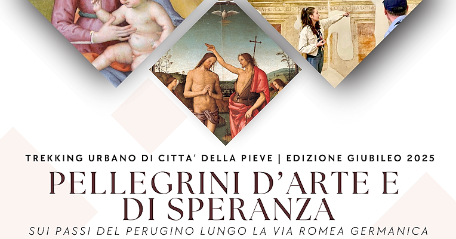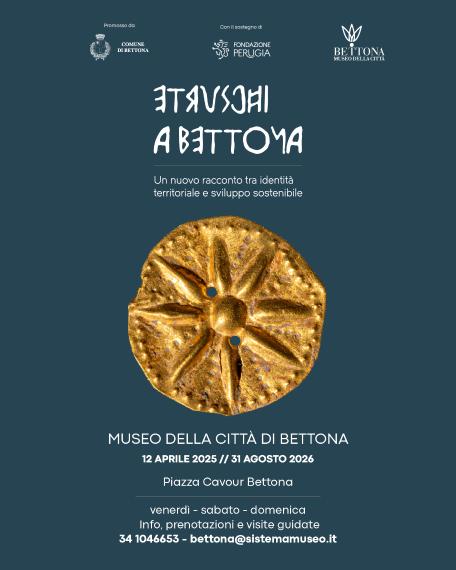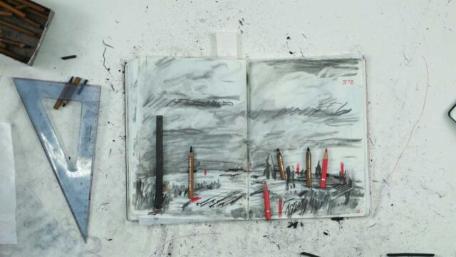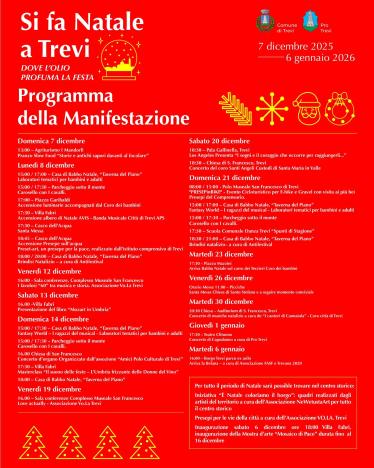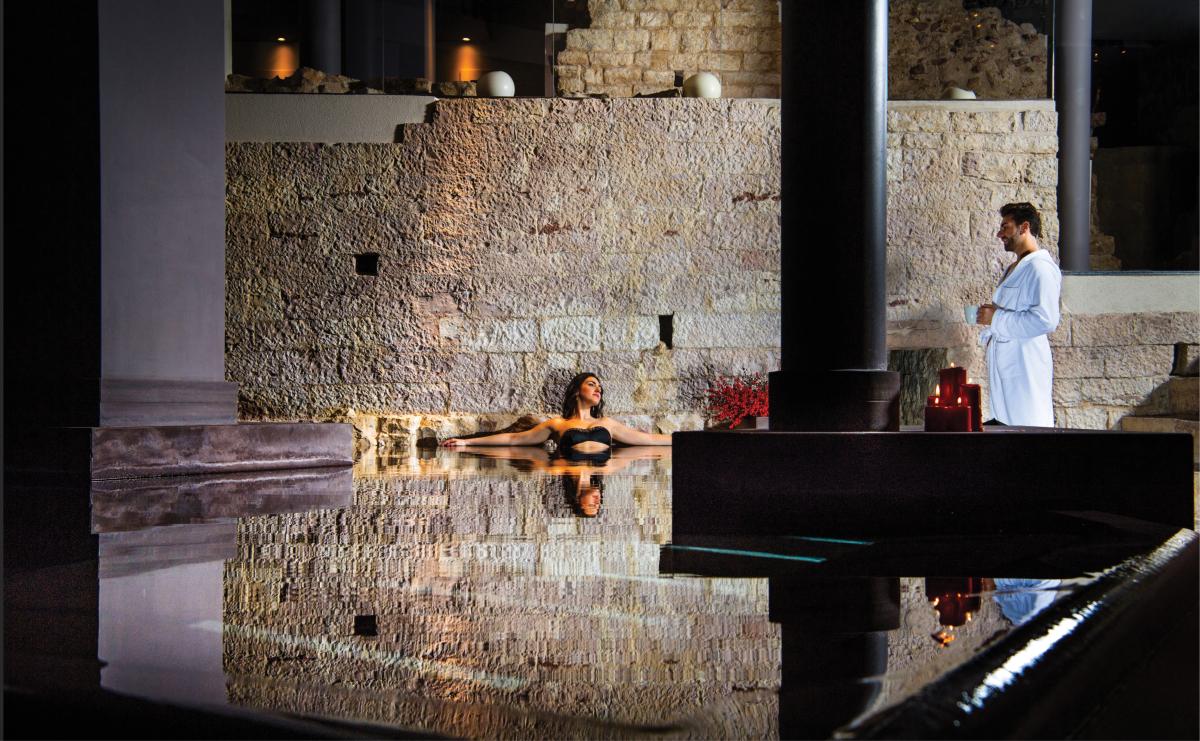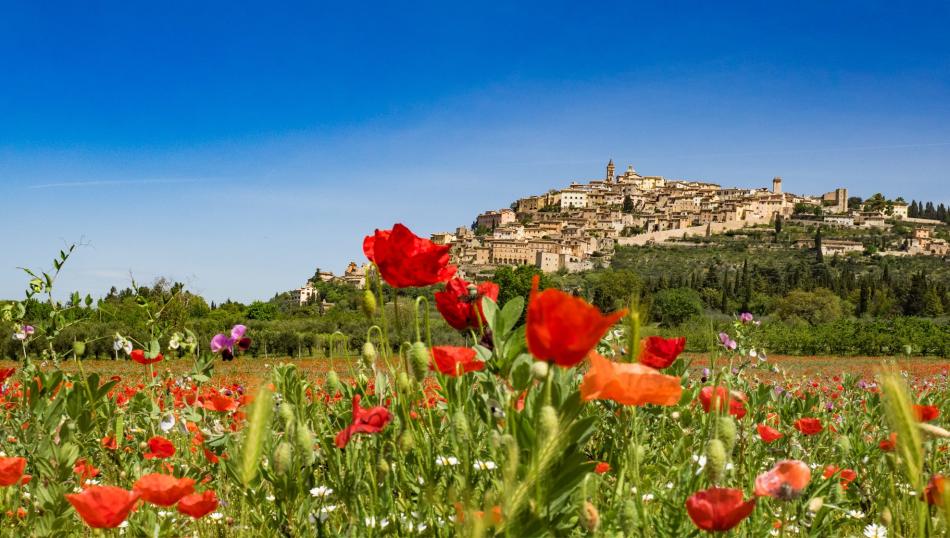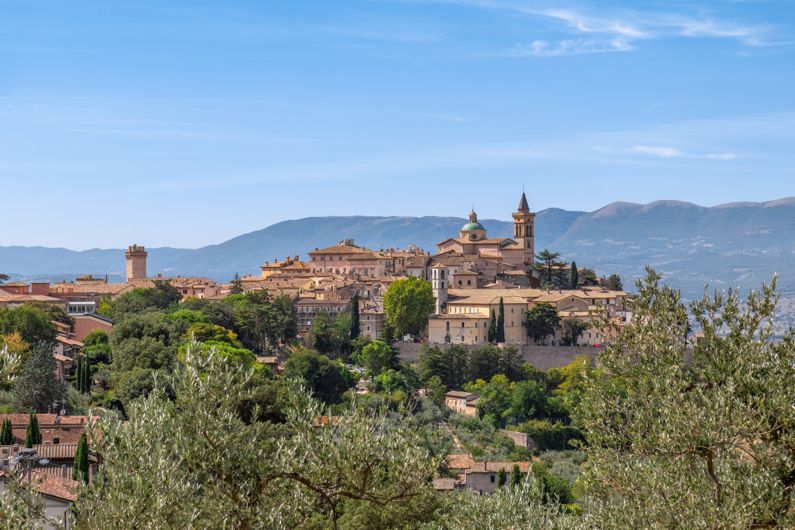Situated in central-west Umbria between Foligno and Spoleto, Trevi rises from the slopes of Mount Serano, which are carpeted in olive tree plantations overlooking the Spoleto Valley.
Churches, towers and palaces give a noble silhouette to the town that stands at 412 metres, offering a breath-taking view onto the Via Flaminia. Because of its remarkable environmental, cultural and artistic heritage, Trevi has become part of the club The Most Beautiful Villages in Italy.
HISTORY
Founded by the Romans, it was an important town along the Flaminius Way. At the fall of the Roman Empire, having already been Christianised by Bishop Emiliano, it was occupied by the Longobards and included in the Duchy of Spoleto.
During the Middle Ages Trevi was ruled by Foligno and Spoleto. Political and military instability continued until the 16th century when, after domination by various lords (Trinci, Michelotti, Sforza), Trevi became part of the Papal States and remained under their domination, except for the brief Napoleonic period, until 1860.
ART, CULTURE, ENVIRONMENT
Immersed in olive plantations, Trevi offers evidence of its Roman period in the mighty town walls (1st century BC) that encircle the historical centre; and the period of the Middle Ages can be seen in the three city gates: Porta del Bruscito, Porta del Cieco, Porta S. Fabiano and the archway, Arco del Mostaccio.
Leading from the walls that enclose the town is the Passeggiata, a magnificent avenue of 800 metres on level ground, that gives a striking panorama onto the valley below.
Among the most interesting religious buildings are the church of Sant'Emiliano (12th century), with the altar of the Sacramento by Rocco da Vicenza (1522) and 16th-century frescoes attributed to Francesco Melanzio. Also worthy of a visit is the Gothic church of San Francesco from 1200; and in the 15th-century Palazzo Comunale, town hall, is the Pinacoteca art gallery with a Madonna by Pintoricchio and a Incoronazione di Maria by Lo Spagna.
The church and the Pinacoteca, together with the Town Museum and the Archelogical Collection, make up the Raccolta d'Arte di S. Francesco, a collection set up in 1996 in a part of the S. Francesco Museum Complex. The Raccolta includes the Museo della Civiltà dell'Ulivo that is the first public museum dedicated to olives and olive oil in Europe, which was created to give value to Trevi's centuries-old tradition.
Of interest are the richly decorated palaces such as the Collegio Etiopico Pontificio (16th century) frescoed by Federico Zuccari; Casa Petrucci (1500s); Palazzo Valenti (1500s); Palazzo della Prepositura Valenti (mid 1600s); and Renaissance Palazzo Lucarini, home to Trevi Flash Art Museum of contemporary art.
In the vicinity worthy of a visit is the church of the Madonna delle Lacrime, which was erected in 1487 to commemorate a miracle and that has a fresco by Perugino. In the hamlet of Bovara is the oldest olive tree in Umbria, 9 metres high and reckoned as 1700 years old. It is known as the tree of Sant'Emiliano because according to tradition in 304, the future patron saint of the town, was tied to it and martyred.
Of particular environmental interest is the course of the Clitunno river, known for its clear fresh waters, through the exceptional landscape of the Southern Umbrian (or Spoleto) Valley.


















